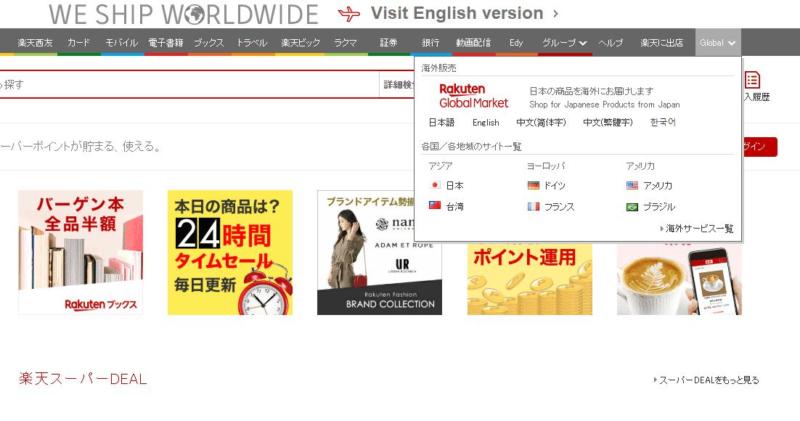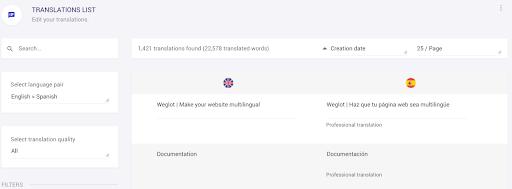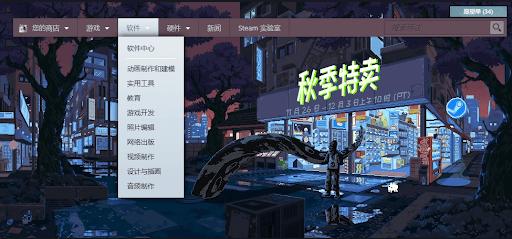- Jan 24, 2020
 0
0- by A2 Marketing Team
At some point, you might notice that your online store’s growth is beginning to stall. There are a lot of ways you can expand your existing customer base, but in some cases, your best bet is to target new users altogether. One way to do that is by translating your e-commerce website into other languages.
English might be king on the web, but you’re missing out on most of the world if that’s the only language on your site. Spanish, for example, can open up a market of about 480 million users around the world – not to mention 50 million native speakers in the US. That’s just one language – imagine the potential audience growth if you added two or more.
In this article, we’ll go over three key reasons why translating your e-commerce website is a smart move. Let’s get to it!
1. You Get Access to a Broader Base of Customers
There are only a finite amount of potential customers for any online store. That includes the people who are interested in your products, have disposable income, and like your brand. Another key criteria is who can understand the language your store uses:

Imagine if you were trying to shop through an online store in another language. The experience would be perplexing. You might not know how to fill out forms, calculate prices, or even sign up for an account in the first place.
The takeaway is that the language you use for your online store plays a significant role in limiting its customer base. With English, you’re off to a great start, but if you want to expand internationally you’ll need to add more languages.
By the numbers, the most popular languages to add to an online store (besides English) are:
- Mandarin Chinese
- Spanish
- Hindi
- Bengali
- Portuguese
We’re not suggesting that you consider all of those languages. Even adding one can make a big difference, but that also means translating a lot of assets and contents, so it’s not a decision to be made lightly.
Even so, if you look at any of the world’s most popular online retailers, you’ll notice that their stores support dozens of languages. Amazon is perhaps the most high-profile example, but they’re far from the only retailer that does this:

Steam – the most popular digital game store – also offers its products in multiple languages, including Chinese:
Asian online stores also don’t fall far behind. Rakuten (Japan’s number one online store) also offers its catalog in multiple languages:

2. Translating Your Site Increases Your Visibility in Search Engines
For a lot of people, the customer journey works something like this:
- You look for a specific product or recommendation via search engines.
- You carefully weigh your options and visit multiple online stores.
- A purchase is made.
Organic traffic is a crucial source of customers for most online stores. That means you want your products to appear in high positions within the Search Engine Result Pages (SERPs) for any relevant queries. Of course, ranking for competitive keywords in English can be incredibly challenging.
In other languages, however, the competition might not be as fierce. By adding more languages to your online store, you can increase your visibility in the SERPs. Your product pages in other languages may rank higher than their original counterparts, leading more traffic and potential customers to your store.

Ideally, you want to target the languages and regions in which your products are most popular.
3. You’ll Be Able to Boost Brand Awareness
Expanding your base of customers and becoming more visible in search engines also means your brand will spend more time in the spotlight. Visitors and customers can more easily become acquainted with your business, what you stand for, and so on.
The more languages you add to your online store, the more recognizable your brand becomes. That makes it easier for new customers to trust you, especially as you gain reviews and feedback in more and more languages.

Your social media presence should also benefit from all the new traffic to your website. A lot of international users will want to follow you, which should translate to more interactions for your content. Some online stores go as far as to set up social media profiles in additional languages:

How Weglot Can Help You Translate Your E-Commerce Website
Translating a full website can involve a lot of work. Even for the most straightforward sites, there’s always more content to deal with than you expect. With an online store, you have to translate dozens – if not hundreds – of product and landing pages, blog articles, and much more.
You’re likely looking at dozens of thousands of words, even for a small online store. The more languages you want to add, the greater the compounding problem.
This is why the smart move is to use a tool that enables you to drastically cut down on the amount of manual work you have to do. Weglot, for example, automatically detects all the content on your online store and enables you to translate your site into more than 100 languages. With a fast first layer of automatic translation, you then have the option to build on your translations by manually editing them or ordering professional translators through the Weglot Dashboard.

Weglot integrates with dozens of the most popular platforms on the web, including WordPress, Magento, OpenCart, Drupal, and many more. As such, whatever platform you use to build your online store, you can use Weglot to help you translate its products, categories, and checkout pages in just one click. There’s no manual string by string translation required:

Plus, this plugin makes sure that Google indexes all of those new pages, which translates to increased visibility on search engines It doesn’t remove all the work that translating an online store involves, but it greatly simplifies the process for any size of business.
Conclusion
Every e-commerce website’s success depends on its customer base. The more customers you can attract, the more your store can grow. By limiting your store to a single language, you’re also capping its potential to grow.
With Weglot, you can translate your e-commerce website into any language you want and it supports most of the most popular CMS and online sales platforms. This enables you to:
- Get access to more customers and make more sales.
- Increase your visibility in search engines.
- Boost brand awareness.
Do you have any questions about how to use Weglot to translate your online store? Let’s go over them in the comments section below!
Weglot offers a 10-day free trial and paid plans starting from €9.90 a month.
Image credit: Pixabay.











